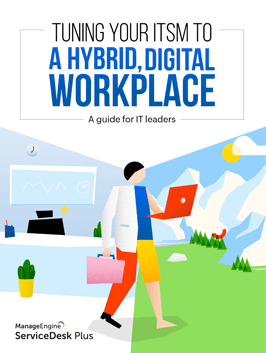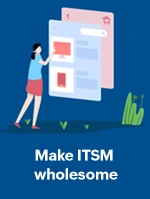This chapter is all about the key roles and responsibilities of change management, explained with a responsible, accountable, consulted, and informed (RACI) matrix diagram.
Change management roles and responsibilities
Change owner:
The change owner is accountable for the entire change management process, including its improvement. Since they're responsible for change management at their organization, they're usually a high-ranking official.
Change manager:
The change manager handles the implementation of the change and the activities related to it. They also manage the CAB and the various teams and stakeholders involved, and coordinate with them.
Change initiator:
The change initiator is the one who initiates the change and adds the change plans, implementation plans, and other required details. They also organize the change implementation plan. A change initiator can either be a technician or an end user.
CAB:
The CAB is a collection of various members from different teams and job functions. Together they analyze the proposed change and give their approval and recommendations regarding the change and its implementation.
Understand the importance of a change advisory board (CAB) and learn how you can manage them effectively in a hybrid environment.
Additional roles
Some organizations use custom roles in addition to these four main ones to delegate work and break down responsibilities. Being able to create custom roles helps you tailor your change management to your organization's needs. A few commonly used additional roles are:
- Change approver
- Change implementer
- Change reviewer
- Change planner
| Process/roles | Change manager | Change initiator | CAB | Change owner |
|---|---|---|---|---|
| Submission | C | R | - | A |
| Creation | C | R | - | A |
| Defining change roles | C | R | - | A |
| Planning | C | R | - | A |
| Approval | R | I | C | A |
| Implementation | C | R | - | A |
| Delegation of work through tasks | C | R | - | A |
| Leveraging project management | C | R | - | A |
| Review | R | I | - | A |
| Closure | C | R | - | A |
* R - Responsible, A - Accountable, C - Consulted, I - Informed
FAQs

The change manager handles the implementation of the change and the activities related to it. They also manage the CAB and the various teams and stakeholders involved, and coordinate with them.
There are four key roles in organizational change. They are as follows:
The change owner is accountable for the entire change management process, including its improvement. Since they're responsible for change management at their organization, they're usually a high-ranking official.
The change manager handles the implementation of the change and the activities related to it. They also manage the CAB and the various teams and stakeholders involved, and coordinate with them.
The change initiator is the one who initiates the change and adds the change plans, implementation plans, and other required details. They also organize the change implementation plan. A change initiator can either be a technician or an end user.
The CAB is a collection of various members from different teams and job functions. Together they analyze the proposed change and give their approval and recommendations regarding the change and its implementation.
There are 7 R's in change management, answering which can boost the change process efficiency.
- 1. Who Raised the change request?
- 2. What is the primary Reason for the change?
- 3. What is the expected Return from the change?
- 4. What are the potential Risks pertaining to the change?
- 5. What are the Resources needed for the change?
- 6. Who is Responsible for the successful implementation of the change?
- 7. What is the Relationship of this change with other changes?






